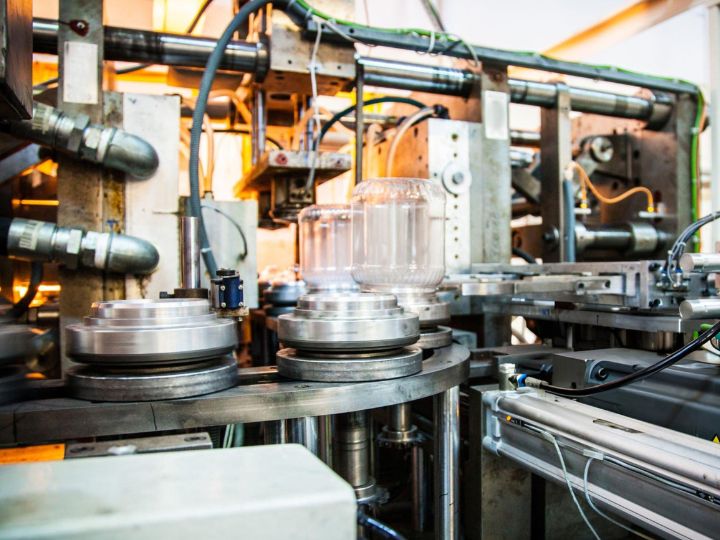In the world of plastic manufacturing, blow moulding reigns supreme for creating a vast array of hollow plastic products. From humble water bottles to complex car parts, blow molding's versatility and efficiency are undeniable. But achieving top-notch quality and functionality in blow molded products hinges on one crucial factor: mold design.
A well-designed blow mold is the sculptor's chisel, transforming a plastic resin into a flawless end product. Conversely, a poorly designed mold can lead to a multitude of problems, from inconsistencies and defects to production delays and increased costs. This blog delves into the intricacies of optimizing blow mold design, ensuring you produce high-quality, functional, and cost-effective blow molded parts.
The Power of Design: Shaping Success in Blow Molding
The blow molding process itself involves shaping a heated plastic tube (parison) by inflating it with air within a closed mold cavity. Once cooled and solidified, the plastic takes the form of the mold, resulting in the final product. While the process seems straightforward, the magic truly lies in the mold design. It dictates everything from material flow and stress distribution to the product's final form, functionality, and even production efficiency.
Investing in an optimized blow mold design offers a multitude of benefits:
-
Superior Product Quality: A well-designed mold ensures consistent wall thickness, proper stress distribution, and minimizes the risk of defects like sink marks, warping, or surface imperfections.
-
Enhanced Functionality: The mold design can incorporate features that optimize the product's functionality, such as integrated ribs for added strength or channels for fluid flow.
-
Increased Production Efficiency: Optimized features like efficient cooling systems and easy part removal minimize cycle times and downtime, leading to higher production output.
-
Reduced Costs: By minimizing defects and production delays, optimized molds contribute to significant cost savings in the long run.
Optimizing Blow Mold Design: A Multifaceted Approach
Creating an exceptional blow mold design requires careful consideration of various factors. Here's a summary of the important components to concentrate on:
A. Part Geometry and Functionality: Designing for Blow Molding
The golden rule? Design your plastic part with blow molding in mind from the very beginning. Here's why:
-
Draft Angles: Incorporate draft angles (slight tapers) on the mold walls to facilitate easy removal of the molded part after cooling. Without proper draft, the part can get stuck, leading to damage or production delays.
-
Wall Thickness Variations: Maintain consistent wall thickness throughout the part whenever possible. Significant variations can cause uneven cooling, leading to warping or structural weaknesses.
-
Undercuts and Complexities: Undercuts (features with inward-facing angles) can be challenging in stretch blow moulding. If unavoidable, consider incorporating mold parting lines or collapsible cores to enable part removal.
B. Material Selection and Resin Properties: Choosing the Right Match
The type of plastic resin you choose (e.g., PET for beverage bottles, HDPE for high-density containers) significantly impacts mold design:
-
Shrinkage Rates: Different resins have varying shrinkage rates as they cool. The mold design must account for this shrinkage to ensure the final product meets the desired dimensions.
-
Processing Temperatures: Resins have specific processing temperature requirements. The mold material needs to be compatible to withstand these temperatures and facilitate efficient heat transfer for proper molding.
C. Mold Functionality and Efficiency: Optimizing the Mold Itself
The mold itself plays a crucial role in the blow moulding process. Here's how to optimize its design for functionality and efficiency:
-
Cooling Systems: Efficient mold cooling is paramount for achieving short cycle times and preventing defects. Strategically placed water channels within the mould ensure uniform cooling of the plastic part.
-
Mold Configurations: Blow molds come in various configurations, such as single-stage (for simpler parts) and multi-stage (for complex geometries). The chosen configuration should consider part complexity and production needs.
D. Maintenance and Manufacturing Considerations: Keeping it Smooth
A well-designed mold prioritizes not just the final product but also ease of maintenance and manufacturing:
-
Mold Cleaning: The mold design should facilitate easy access for cleaning and removing any plastic residue that can accumulate over time. In addition to reducing downtime, this guarantees constant product quality.
-
Part Removal and Handling: Features like strategically placed ejector pins or angled surfaces can aid in smooth part removal, minimizing the risk of damage during ejection.
-
Finishing Processes: If the blow molded part requires secondary finishing processes like painting or printing, the mold design should consider incorporating features that aid in part handling and orientation.
Advanced Techniques for the Discerning Designer
For those seeking to push the boundaries of blow mold design, here are some advanced techniques to consider:
-
Finite Element Analysis (FEA): FEA is a powerful computer simulation tool that allows designers to predict stress distribution, potential deformation, and other factors within the blow molded part during the process. This virtual analysis helps identify potential weak points in the mold design and optimize it for optimal product performance.
-
Mold Texturing: For specific surface finishes on the blow molded part, mold texturing can be employed. The mould surface is etched with a desired pattern, which is then transferred to the plastic during molding. This eliminates the need for additional post-processing steps for certain textures.
Conclusion
Investing in an optimized blow mold design is a strategic move for any manufacturer seeking to produce high-quality, functional, and cost-effective blow molded products. This approach requires a collaborative effort between experienced mold designers, engineers who understand the intricacies of the blow moulding process, and the manufacturers themselves. By considering the factors discussed above and potentially incorporating advanced techniques like FEA, you can achieve a level of precision and efficiency that elevates your blow molding operation to new heights.
Remember, a well-designed blow mold is more than just a tool; it's an investment in your brand reputation and long-term success. So, the next time you embark on a blow molding project, prioritize mold design optimization and witness the difference it makes in the quality and efficiency of your production.

